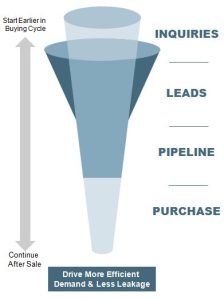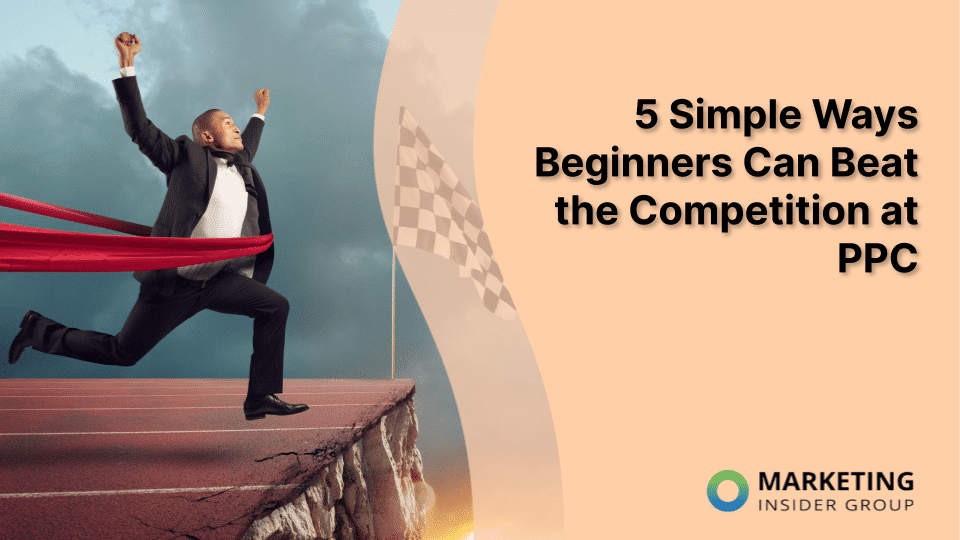
10 Simple Tricks to Accelerate Your Sales Pipeline
We know the sales cycle is composed of phases. It may vary greatly, especially on the time that it takes to complete. A long sales cycle typically requires several touch points and spans several weeks to months.
I remember seeing around 84 days to convert a lead into an opportunity when I ran demand generation for a large software company. Then it took on average, another 18 days to turn it into a deal.
Harvard University found that at least 25% of B2B sales cycles take a minimum of 7 months to close.
SiriusDecisions, found that the typical cycle has extended by 22% over the last five years because the digital marketing mix has made things more complex and there are now more decision-makers involved in the process.
Accelerating sales and closing deals faster means keeping the process short and your leads engaged and moving.
Here are some simple tips to accelerate your sales cycle.
Quick Takeaways:
- It all starts with a lead, and how you handle them in the early stages matters. Automate your process to nurture leads more thoroughly before forcing them through the sales funnel too early.
- Focus on understanding your prospective clients, their buying process and which marketing channels you should utilize to reach them best. Then, align your content to be of interest to them.
- Continue building your relationship with clients even after the close to create brand advocates that will lead more prospects to your front door.
1. Nurture Your Leads
Start by segmenting your contacts into lists of casual browsers and of those who may not purchase soon. These are the leads who need nurturing before being passed off to sales. Lead nurturing allows your sales team to work on qualified, ready-to-buy prospects for a faster sales pipeline.
Clogging up your pipeline with leads that aren’t ready slows down the cycle. One of the main reasons behind this is that 61% of B2B marketers (as per Salesforce data) send all leads directly to sales without determining if the leads should still be nurtured.
2. Automate Where Possible
Automating some processes in the pipeline helps in lead scoring and ensures that leads are attended to promptly. Determine which tasks are systematic/repetitive and start automating those, since reducing the hours needed to complete these tasks means your team can spend more time working on high-value leads.
Two tasks that you can automate are follow-ups and lead qualification, which are both necessary in sales but can be tedious. Follow-ups make your clients feel important, but in the hustle and bustle of modern life, it can be hard to stay on top of following up. Draft follow-ups in advance and send them automatically through your CRM.
Another big challenge that can be automated is qualifying sales-ready leads before handing them off to the sales team. Automation can address this flaw in the vetting process to provide a faster, scalable, and more efficient qualification process.
3. Implement Paid Search for the Top of the Funnel
Longer sales cycles mean your prospects are taking their time and researching their options, which they are likely doing via the Internet.
Paid search makes sure that your company appears on top of their SERPs, allowing you to gain additional traffic, and build brand awareness.
Start by researching your keywords. Remember to target the keywords that people who are researching your products and services will use.
Then, create landing pages full of educational content to continue nurturing these leads. Landing pages need great CTAs as well, but don’t be too aggressive since they still may not be ready to make that final purchase decision.
You can also create ads that present why customers should choose you instead of your competitors.
4. Work with Real Buyers
Real buyers, in this case, are the decision-makers. Not communicating directly with these people often leads to long and uncertain sales cycles.
Find ways to talk to and work with executives. You can start by working with the mid-level clients and building their trust until you can persuade them into setting a meeting with their decision maker.
5. Understand the Decision-Making Process
Ask your prospects about their timeframe. Learn what they want to know before making a decision, as well as who’s involved in the decision. Discover their criteria and what they want to learn about the business, and you’ll be set up for success.
Their answers will give you an idea of how their assessment will go down, helping you develop a lead management strategy that’s tailored to fit your particular target audience or persona.
6. Align Content and Reward with the Sales Cycle
There’s a natural progression within the marketing funnel, and leads will have to advance through each stage at some point. Make sure that you’re supplying them with the necessary information they need throughout their journey that’s relevant to each step of the buying process.
Start by establishing brand awareness and credibility, then work on serving up your offerings once the prospect has enough knowledge. Make sure that with each piece of content you offer, you’re letting them know what they can do from there to move them further into the funnel.
Content with thought-leadership can be integrated into promotional offerings. Balance educational content by showcasing your products and services. Once you’ve convinced them and passed them on to sales, they’ll be much closer to making that all-important purchase decision.
7. Personalize Everything
Nowadays, most people have learned how to spot and dismiss obvious marketing ploys, making it harder for businesses to hold their engagement during the initial stages of the sales cycle. However, this can be solved by having a deeper understanding of a customer’s interests and personalizing the engagement.
More in-depth information about customers requires gaining their trust. So, you need to provide something of value in return. Here are some other ways to personalize your marketing efforts:
- Have a remarketing strategy that caters to customer behaviors or actions
- Put a face to your brand that will promote and represent your company
- Use relatable language in your messaging that still reflects your company image
8. Focus on High-Performing Channels
Having more marketing channels isn’t always helpful, especially when you’re trying to cut your sales cycle time in half. Figure out what to focus on and find out which channels perform best. Naturally, continue to build systems that support a focus on those channels to ensure the highest returns. There are a few must-haves, like email marketing that boasts a 4,200% ROI, and content marketing that continues to become more and more popular each year.
Keep in mind that your channels should regularly be tracked, as each one’s performance will change over time. Don’t be afraid to experiment with and try out new channels as you optimize your campaign.
9. Use an Incremental Close
Make the buyer deeply invested in you through small commitments to put them in the habit of saying “yes.” Each time you have a positive interaction, it’ll build towards a mutually beneficial relationship based on trust and value.
Determine the requests you’ll make at the end of every interaction, ensuring that both you and the prospect will benefit from it. Each commitment should increase in size and significance as you continue to nurture and eventually lead to closing sales leads.
10. Leverage Social Proof
Your current, satisfied customers are the best brand ambassadors you can have when trying to sway prospects. Peer opinions and testimonials can be leveraged to win a prospect’s confidence, resulting in a faster sales cycle. Here are some ways to do it:
- Find a mutual contact and ask for a personal introduction.
- Send them case studies as evidence that your product or service has helped your customers’ ROI.
- Invite buyers to an event where they can mingle with your current customers. The customers will eventually talk you up.
- Bring up organizations that may be dealing with a challenge similar to the prospects and that they can relate to.
Bonus: Be Aware of the Demand Funnel “Cocktail”
I was once asked by the good folks over at Focus to participate in an exciting project and the first edition of the “Book of Funnels”. The challenge was this: put all your thoughts on the marketing and sales funnel into one page and use a picture to tell your story.
I have to admit that this project was a lot of fun. At the time, I was leading a large online demand generation program and had some thoughts about the state of the marketing and sales funnel. And I agree with Craig Rosenberg at Focus, that “every organization should make the effort to depict its revenue funnel on one page. It serves as the basis for your sales and marketing strategy.”
There was much discussion by the leaders in our organization about the shape of our funnel and the need to increase the velocity of our demand activities by moving from a wine-glass shaped funnel to one shaped more like a champagne flute or a shot glass.
The use of the drinking metaphor is too alluring so to all of you who have used this before, thank you for the inspiration. Now there were a few main points I tried to get across in my submission:

- The division between a marketing and sales funnel is a myth. Marketers sell stuff and sales people market stuff. The funnel is a useful way to analyze the rate at which we are capturing and managing demand.
- To our customers there is no funnel. I believe we should align our efforts to customer needs.
- There is no beginning and no end. We should have a continuous level of activity in the marketplace. This way we are engaging prospects earlier in the buying process and never stop engaging them even (or especially) after they purchase from us.
- The earlier engagement and continuous activity level will create more efficient demand management by delivering against customer needs. Our customers will tell us when they are ready to speak to a salesperson. For most B2B buying experiences, they expect to speak to a salesperson at some point in their journey.
- By engaging with customers on their terms, when they start the buying process and throughout their relationship with your company, you create a thinner and taller demand funnel. Conversions increase. Marketing spend is much more efficient. And customer lifetime values increase.
Now there are many great examples of funnels in this book and none of them are wrong. Some suggest the funnel is obsolete, one of my favorites is Barbra Gago’s “hourglass” that suggests we start with the community to drive customer evangelists. I also like Adam Needles “Buyers 2.0” demonstrating that buyers chose their own path and Steve Woods comments about valuation of leads and analyzing marketing impact on revenue. But whichever funnel “speaks” to you, I hope we gave you something to think about and also some direction on how to analyze your own marketing efforts.
Over to You
Accelerating the sales pipeline requires a defined sales process, knowing your prospects’ interests and pain points, determining which leads to enter into the pipeline and which leads to nurture, and continue building your relationship with the clients.
Automating a few steps in the buying process can also be beneficial in moving through the sales cycle faster to quickly earn your revenue and grow your business.
Once you’ve managed to implement some of these tactics, you’ll notice your sales pipeline becoming shorter, more systematic, and more predictable. All of which are great for making your sales process more efficient and helping decision-making in the future.
Need help building a bank of content prospective leads will love? Check out our SEO Blog Writing Services or schedule a free consultation today!



![Understanding the Stages of Your Sales Funnel [Infographic]](https://marketinginsidergroup.com/wp-content/uploads/2023/09/Screenshot-2023-07-11-at-10.59.54-AM.png)


